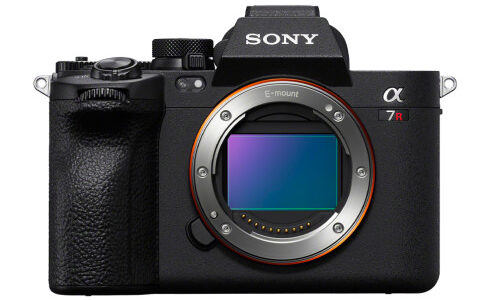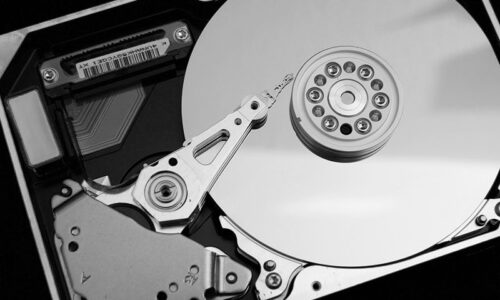The Ultimate Guide to SD, Compact Flash, CF Express, and XQD Camera Memory Cards: Everything You Need to Know
The Ultimate Guide to SD, Compact Flash, CF Express, and XQD Camera Memory Cards: Everything You Need to Know
Subscribe to YouTube
What is the Difference Between Camera Memory Cards

When it comes to storing your photos and videos, the type of camera memory cards you use can have a big impact on the overall quality and speed of your camera. There are several types of camera memory cards available, including SD cards, Compact Flash (CF) cards, CF Express cards, and XQD cards. In this article, we’ll take a closer look at each type of card and compare the pros and cons, including read and write speeds.
SD Cards:
Secure Digital (SD) cards are one of the most common types of memory cards used in cameras. They come in various sizes, from tiny microSD cards to larger SDXC cards. SD cards are widely available and are often used in consumer-level cameras and smartphones.
Pros:
- Wide compatibility: SD cards are compatible with a wide range of devices, making them a popular choice for photographers and videographers.
- Affordable: SD cards are typically less expensive than other types of memory cards.
Cons:
- Limited speed: Some older SD cards may have slower read and write speeds, which can affect the overall speed and performance of your camera.
Compact Flash (CF) Cards:
Compact Flash (CF) cards are another type of memory card that have been around for many years. They are larger in size than SD cards and typically offer faster read and write speeds. CF cards are often used in professional-level cameras and other high-end devices.
Pros:
- Fast speeds: CF cards offer faster read and write speeds compared to SD cards, making them a popular choice for high-end cameras and other demanding devices.
- Durable: CF cards are built to withstand harsh conditions, making them a reliable choice for photographers who shoot in tough environments.
Cons:
- Larger size: CF cards are larger than SD cards, which can be a problem in devices with limited space.
- More expensive: CF cards are typically more expensive than SD cards.
CF Express Cards:
CF Express cards are a newer type of memory card that offer even faster speeds and higher capacities compared to CF cards. They are designed to work with the latest cameras and other high-end devices that require fast, high-capacity storage.
Pros:
- Fast speeds: CF Express cards offer some of the fastest read and write speeds available in memory cards, making them ideal for demanding tasks like 4K video recording.
- Large capacities: CF Express cards are available in large capacities, making them a good choice for photographers who shoot a lot of high-resolution photos or videos.
Cons:
- Limited compatibility: CF Express cards are not compatible with all cameras and devices, so make sure to check your device’s compatibility before purchasing.
- More expensive: CF Express cards are typically more expensive than other types of memory cards.
XQD Cards:
QXD cards are a type of memory card that is designed specifically for Sony cameras. They offer fast read and write speeds and are built to withstand harsh conditions.
Pros:
- Fast speeds: XQD cards offer fast read and write speeds, making them ideal for demanding tasks like 4K video recording.
- Durable: XQD cards are built to withstand harsh conditions, making them a reliable choice for photographers who shoot in tough environments.
Cons:
- Limited compatibility: XQD cards are only compatible with Sony cameras, so they are not a good choice if you use multiple cameras from different brands.
- More expensive: XQD cards are typically more expensive than other types of memory cards.
Camera Memory Card Size and Speed

Read/Write Speeds:
Read and write speeds are the speeds at which data can be transferred to and from. If you only see on speed like on the image above, that is your read speed. In this case your write speed will be slower.
Camera memory cards come in various sizes, measured in gigabytes (GB) or terabytes (TB), to accommodate different storage needs. A larger memory card means you can store more photos and videos, but larger cards can also be more expensive.
When choosing a camera memory card, it’s important to consider the storage size you need based on the number of photos and videos you plan to store. As a general rule, a 32 GB memory card can store about 1000-2000 photos and about 1 hour of standard definition video, while a 64 GB memory card can store about 2000-4000 photos and about 2 hours of standard definition video.
In addition to storage size, camera memory cards are also categorized by “class”. The class of a memory card refers to its speed performance, which is important for tasks like recording video. There are four main memory card classes: Class 2, Class 4, Class 6, and Class 10. The higher the class number, the faster the card’s read and write speeds will be.
Class 2 cards are the slowest and are typically not recommended for use in cameras, as they may not be fast enough to keep up with demanding tasks like recording video. Class 4 cards are a good choice for basic photography and can handle standard definition video recording. Class 6 and Class 10 cards are the fastest and are recommended for demanding tasks like recording high definition or 4K video.
The read/write speed of a camera memory cards refers to the speed at which data can be transferred to and from the card. The read speed is the speed at which the camera can access and retrieve data from the card, while the write speed is the speed at which the camera can save data to the card.
The read/write speed of a camera memory cards can have a significant impact on the performance of a camera, particularly when it comes to capturing fast-moving action or recording video. A card with a faster read/write speed will allow the camera to save and retrieve data more quickly, resulting in smoother and more continuous recording and improved image quality.
For photography, a camera memory card with a fast write speed is particularly important when capturing fast-paced action, such as sports or wildlife photography. A fast write speed will allow the camera to quickly save each image as it is captured, reducing the risk of data loss due to buffer overflow. A fast read speed is also important for fast image playback and transfer, as well as for advanced features such as burst mode and high-speed continuous shooting.
For video recording, the write speed of a camera memory card is especially important. A slow write speed can result in dropped frames or stuttering video, making it difficult to capture smooth and seamless video footage. A fast write speed, on the other hand, will allow the camera to quickly save each frame of video as it is recorded, resulting in smooth and continuous video footage.
In conclusion, the read/write speed of a camera memory card can have a significant impact on both photography and video recording. When choosing a camera memory card, it’s important to consider the read/write speed to ensure that the card can keep up with the demands of your shooting style and recording needs.
What is SD, SDHC, and SDXC
Secure Digital (SD) cards are a type of memory card commonly used in cameras, smartphones, and other devices. There are several different types of SD cards, including SD, SDHC, and SDXC. The main difference between these types of SD cards is their capacity and compatibility.
SD cards have a maximum capacity of 2GB and are not as widely used as other types of SD cards. They are limited in terms of their compatibility and may not work with newer devices.
SDHC (Secure Digital High Capacity) cards have a maximum capacity of 32GB and are designed to work with newer devices that require more storage capacity. SDHC cards are backward compatible with devices that support standard SD cards, but they may not work with older devices that only support standard SD cards.
SDXC (Secure Digital Extended Capacity) cards have a maximum capacity of 2TB and offer even more storage capacity compared to SDHC cards. SDXC cards are designed for use in high-end cameras, video cameras, and other devices that require a lot of storage. They are backward compatible with devices that support SDHC cards, but may not work with older devices that only support standard SD cards.
In conclusion, the main difference between SD, SDHC, and SDXC camera memory cards are their storage capacity and compatibility with different devices. When choosing a memory card, it’s important to consider the capacity and compatibility requirements of your device to ensure that you choose the right type of SD card for your needs.
What are Video Class Ratings
SD Card Video Speed Class is a rating system used to indicate the minimum writing speed of a Secure Digital (SD) camera memory card for recording video. The Video Speed Class rating is indicated by a number inside a “V” symbol on the card and ranges from V6 to V90. The higher the number, the faster the writing speed and the better the card will perform when recording video.
Here’s what the different Video Speed Class ratings mean:
- V6: minimum writing speed of 6 MB/s, suitable for standard definition (SD) video recording
- V10: minimum writing speed of 10 MB/s, suitable for high definition (HD) video recording
- V30: minimum writing speed of 30 MB/s, suitable for full HD (FHD) and 4K video recording
- V60: minimum writing speed of 60 MB/s, suitable for 4K and 8K video recording
- V90: minimum writing speed of 90 MB/s, suitable for the highest quality 8K and slow-motion video recording
It’s important to note that the Video Speed Class rating only indicates the minimum writing speed and does not guarantee maximum performance. Other factors, such as the camera’s recording quality and the size of the video files, can also impact the performance of the card.
When choosing a memory card for video recording, it’s important to consider the Video Speed Class rating to ensure that the card can keep up with the demands of your recording needs. A card with a higher Video Speed Class rating will generally provide better performance, but it will also be more expensive.
The read/write speed of a camera memory card refers to the speed at which data can be transferred to and from the card. The read speed is the speed at which the camera can access and retrieve data from the card, while the write speed is the speed at which the camera can save data to the card.
The read/write speed of a camera memory card can have a significant impact on the performance of a camera, particularly when it comes to capturing fast-moving action or recording video.
Would you like to to find out more about digital photography. Check out my other miscellaneous posts https://johnwhiteheadimages.com/category/miscellaneous/


